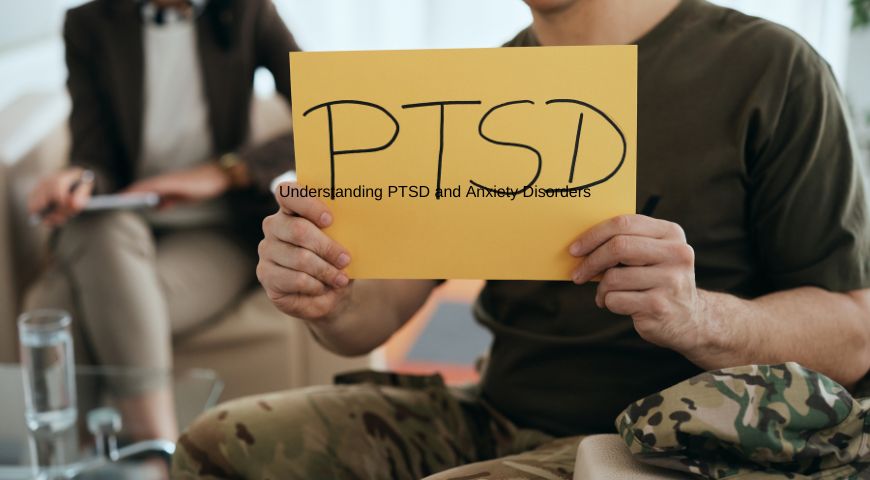As a therapist in Mumbai, I’ve worked with many clients who are struggling with anxiety disorders and PTSD (Post-Traumatic Stress Disorder). Both of these conditions can have a profound impact on an individual’s mental health, and they often overlap in significant ways. Understanding the connection between PTSD and anxiety disorders is crucial for providing effective treatment and support.
In my work as a psychologist in India, I have seen how individuals dealing with trauma can also develop anxiety, and vice versa. The relationship between PTSD and anxiety is complex, and many people are unaware that trauma can often be the root cause of their anxiety. Through therapy, we can explore this connection and work towards healing both conditions simultaneously.
Understanding PTSD and Anxiety Disorders

PTSD is a mental health condition that can develop after someone experiences or witnesses a traumatic event, such as an accident, violence, natural disaster, or loss. Individuals with PTSD may experience flashbacks, nightmares, and intense emotional distress triggered by reminders of the trauma. These symptoms can interfere with daily life and make it difficult for individuals to function normally.
Anxiety disorders, on the other hand, include a range of conditions such as generalized anxiety disorder (GAD), panic disorder, and social anxiety disorder. These conditions involve excessive worry, fear, and nervousness, which can also interfere with everyday life. Anxiety can manifest as constant worrying, physical symptoms like rapid heartbeats or sweating, and avoidance of certain situations or places that trigger anxious feelings.
While PTSD and anxiety disorders are distinct, they often co-occur. As a PTSD specialist in Mumbai, I frequently see clients who are dealing with both conditions and treating one without addressing the other can hinder the healing process.
The Connection Between PTSD and Anxiety
The connection between PTSD and anxiety is rooted in the way our brain and body respond to trauma. When someone experiences a traumatic event, their nervous system goes into “fight or flight” mode, preparing the body to deal with danger. In individuals with PTSD, this response doesn’t shut off properly, leading to chronic hyperarousal, fear, and anxiety.
Over time, the hypervigilance associated with PTSD can develop into an anxiety disorder. For example, someone who has experienced a car accident might develop PTSD, experiencing flashbacks or nightmares about the event. Alongside PTSD, they may begin to fear driving or riding in cars, leading to avoidance behaviors and a generalized sense of anxiety.
Similarly, someone with pre-existing anxiety may be more vulnerable to developing PTSD after a traumatic event. If a person already struggles with anxious thoughts and responses, the trauma may intensify these feelings, making it more difficult to cope with both PTSD and anxiety.
Treating PTSD and Anxiety Together
Addressing the connection between PTSD and anxiety disorders requires a comprehensive treatment approach. In my practice, I offer anxiety treatment in Mumbai that is tailored to the unique needs of each individual, especially those dealing with trauma.
One of the most effective treatments for both PTSD and anxiety disorders is Cognitive Behavioural Therapy (CBT). CBT helps individuals identify negative thought patterns and reframe them into healthier, more constructive ones. This therapy is especially useful for clients with PTSD, as it can help them process the trauma in a safe and supportive environment.
For clients dealing with both PTSD and anxiety, Exposure Therapy is often used as part of CBT. This technique involves gradually exposing the individual to their fears or triggers in a controlled setting, allowing them to confront their anxiety without being overwhelmed. Over time, this helps reduce the intensity of their responses to traumatic memories or anxiety triggers.
As a PTSD specialist in Mumbai, I use Eye Movement Desensitization and Reprocessing (EMDR) in treatment plans. EMDR helps individuals process trauma through guided eye movements, reducing the emotional intensity of traumatic memories. It is highly effective for PTSD and can also ease anxiety symptoms.
When to Seek Help
If you or someone you know is struggling with PTSD and anxiety, seek professional help. Early intervention improves the chances of recovery. These conditions are treatable with a tailored approach that addresses each person’s unique needs and experiences.
As a psychologist in India, I provide therapy worldwide, helping clients connect their trauma to their anxiety. Whether in Mumbai or elsewhere, therapy offers tools and support to manage both effectively.
Final Thoughts
The connection between PTSD and anxiety disorders is significant, making it crucial to understand for effective treatment. Therapies like CBT, Exposure Therapy, and EMDR help individuals manage symptoms, process trauma, and regain control of their mental health.
If you’re dealing with PTSD, anxiety, or both, don’t hesitate to reach out. Therapy helps you manage complex emotions and heal from trauma.




